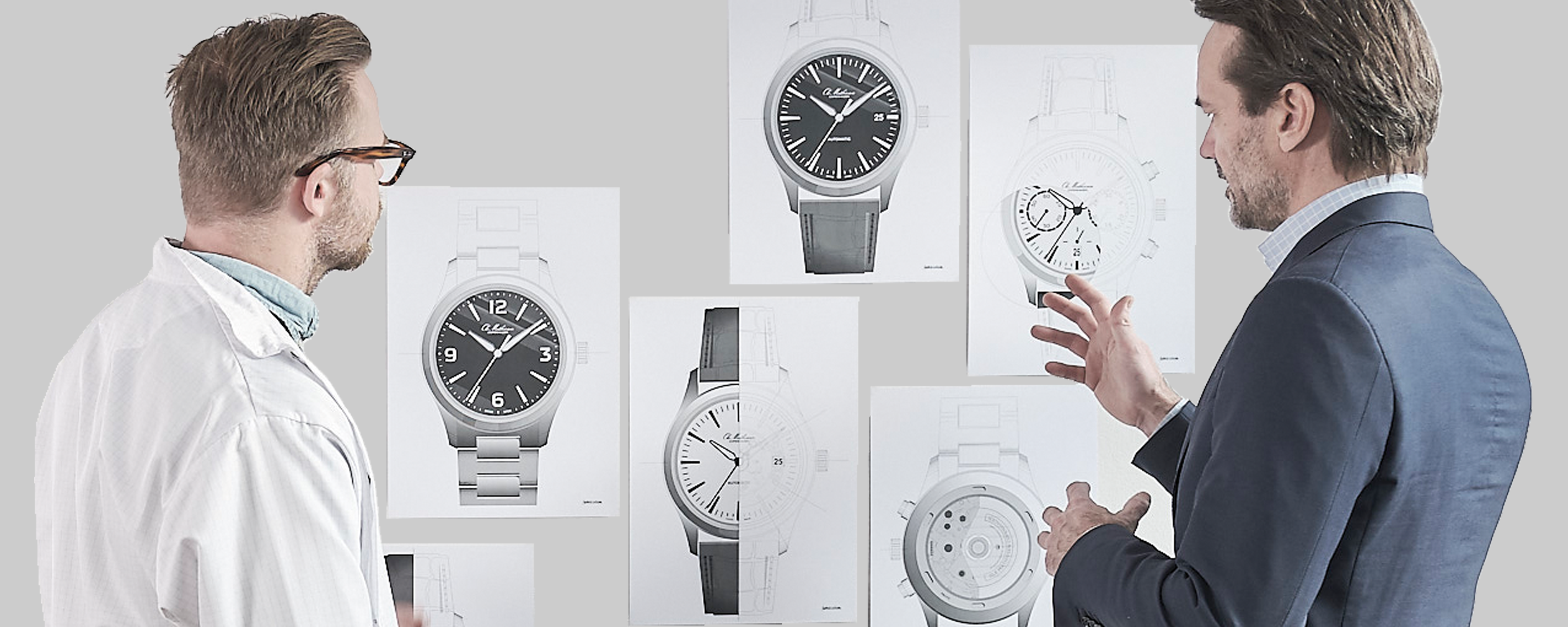

Redesigning Time
The design and development department at Ole Mathiesen, is developing a new collection of watches, in celebration of the 100th anniversary, of when Axel O. Mathiesen established his watch company in Copenhagen in 1919.
“Stillness of style,” is how Christian Mathiesen describes the Ole Mathiesen design. Although Ole Mathiesen is not a design brand, its unmistakable design idiom contributes to the essence of the watches. The Ole Mathiesen characteristics seem to express inner strength and offer a reassuring sense of security. The stillness of the design makes the pure aesthetic feel right in the present, as it has in the past and will in the future.
For centuries a watch was an instrument whose purpose was to measure time, contained within a beautiful case with well-executed dial. Today design plays an increasingly important role. “As far as branding is concerned, these days storytelling and emotional appeal are just as important,” says Christian Mathiesen. The Ole Mathiesen watch design generated such enthusiasm from the start that the impact of the brand is regarded as anachronistic.
The philosophy behind the design of the watches was a direct expression of Ole Mathiesen’s ambition to create simple, well-proportioned timepieces of high quality at affordable prices. This concept is rooted in the Danish design tradition of the 1960s, and follows the design mantra “form follows function,”. This principle is associated with 20th century modernist architecture and Bauhaus and was the guiding principle for Christian Mathiesen and the research and development team in the design of new collections.
“It can take countless drafts, prototypes and attempts to get the proportions right and to create visual balance. The substance of the materials hangs in the balance of tenths of millimeters, and this means that we have to alternate between technical illustrations and hand-made models.”

“In the development phase of our new 1919 Sportivo, we felt a strong need to create a collection that reflects our inheritance and history and that is rooted in the present. That means taking the best from the past and present to bring about a sense of being both sensible and modern,” tells Christian Mathiesen, who is responsible for the design. Recognizing the influence of historic models from the 1950s and 1960s, the design attempts to produce a well-proportioned watch with the substance and quality of details that are essential to Ole Mathiesen. Watch design often starts with the inner workings, but it is not simply a matter of placing the hands and indicators where the driving mechanism requires them to be.
Christian Mathiesen explains, “The development of a new watch involves a reciprocal exchange between the non-visibility of the technical architecture of the watch movement and the overall visible aesthetic. We do not produce the movements ourselves, but we have them adapted so that there is optimal interplay between the inner functions and outward appearance. Although my father’s classic watch from 1962 is ultrathin without anything superfluous, it is very interesting to create new watches with the characteristics of the classic version but with greater volume. It seems to me that the models I have developed since 2000 share a fascinating tension between the simplicity and complexity that is also found in the Ole Mathiesen watches from the 1960s,” continues Mathiesen.

The technical discipline that is required of the design team cannot be achieved by mathematical calculations alone. Another important part of the process is making prototypes and testing them on the wrist. This gives a better sense of the watch and that enables the team to determine the best surface treatment as well as solutions for the design details. “It can be as little as a tenth of a millimeter that makes all the difference,” says Christian Mathiesen. The team persists in this phase until they can sense that they have ‘struck gold.’ Although the result may appear to be relatively simple, its development often takes years.
These days a lot of the younger generation wear smart watches, but Christian Mathiesen is confident that many of them will aspire to have a more classic, luxurious watch in the future:“We remain honest and authentic in relation to our aesthetic and design idiom, so I believe that our watches and their understated signal value will be attractive for younger generations too.”In the development of the new series, apart from the functionality and technical aspects, we have attempted to create a special ambiance and spirit that characterize the collection, and to find ways for the watches to embody this emotional experience:“The prototypes we are producing consist of two automatic versions and two battery-driven quartz versions. For the first time in our history, we are also making a chronograph,” he continues.
The development of the company’s first chronograph has been an exercise in uniting opposites. The simple and humble expression on the dial of the watch contrasts with the mechanical complexity that lies within. “We always attempt to follow the design mantra, ‘form follows function’ but in this case, the task consisted of downplaying the complexity of the watch movement in the expression of the dial, while at the same time increasing the active, athletic signal value of the watch,” says Christian Mathiesen.
The finished watch is not yet ready to be presented, but Christian Mathiesen is happy with the result. “I really think that it has succeeded well,” he says about the model that is aimed at young, active individuals. The 1919 Sportivo collection refers to the 1919 Heritage collection that honors the first generation of the family, Axel O. Mathiesen, who founded the watchmaking business in Copenhagen 100 years ago.